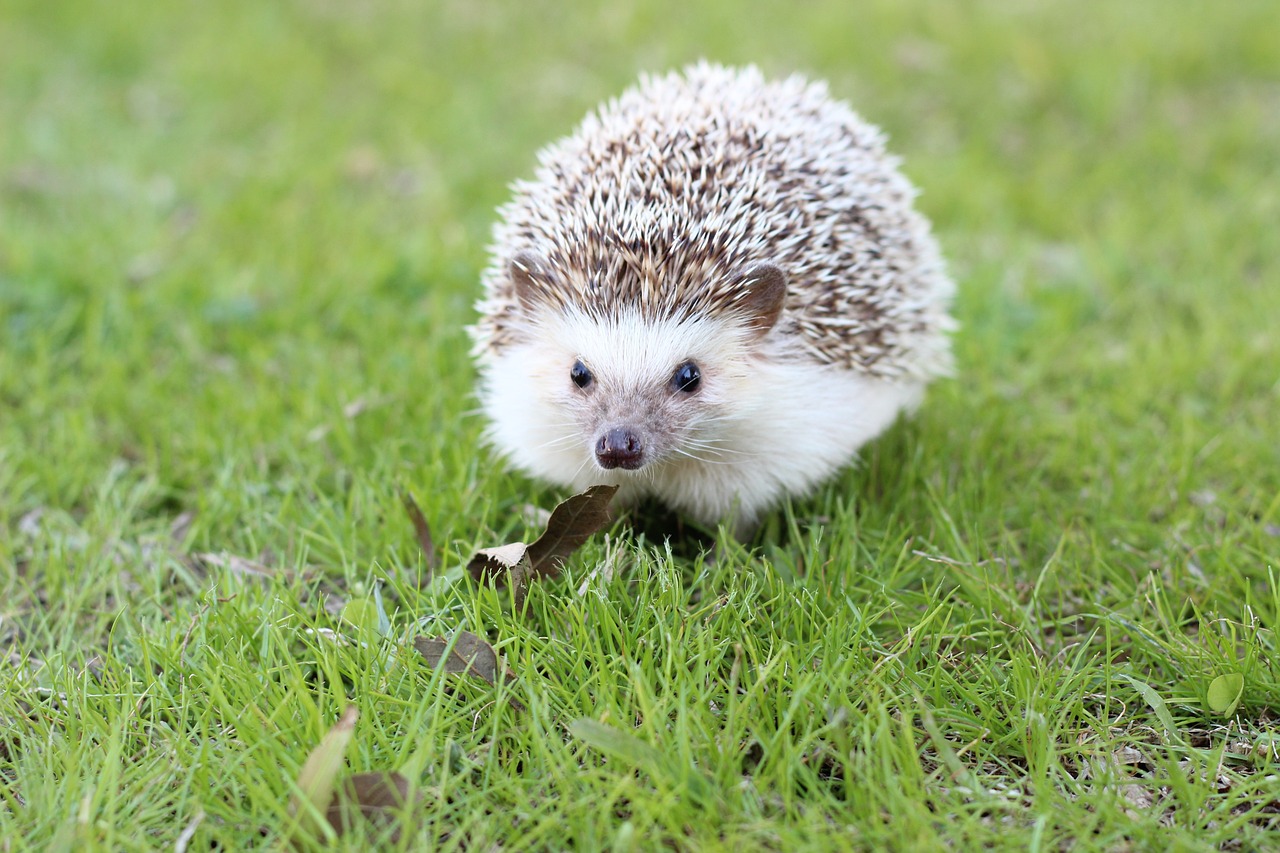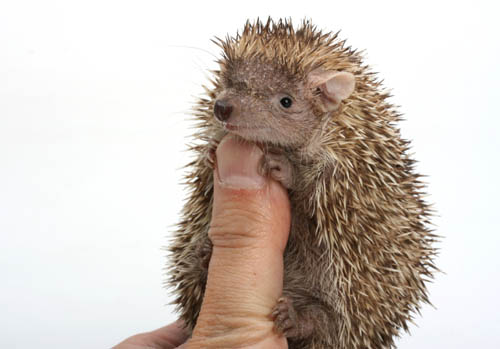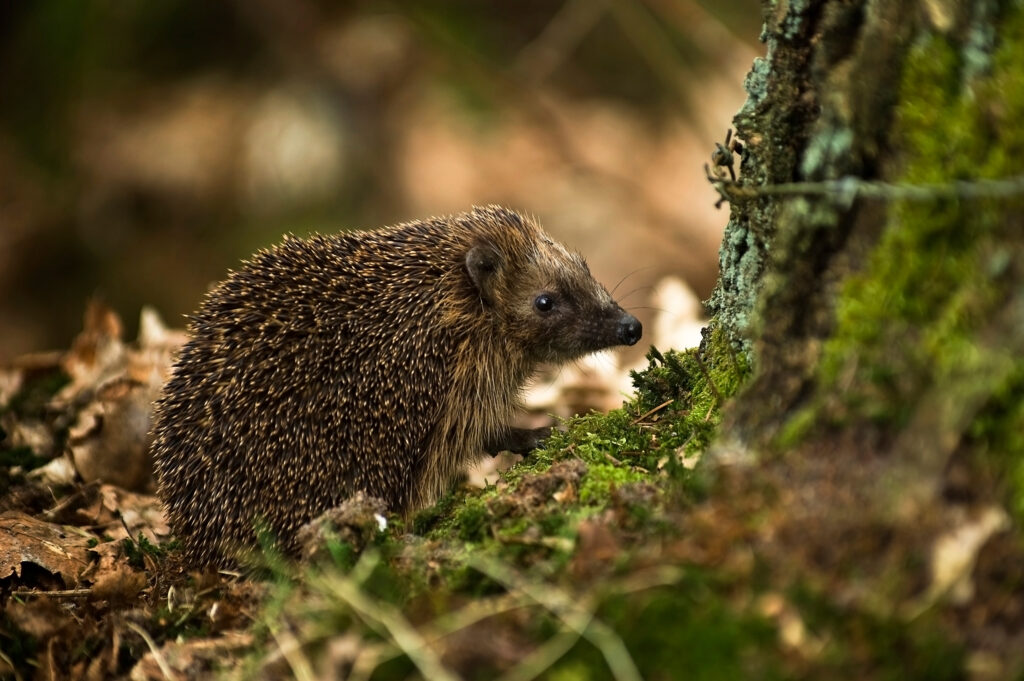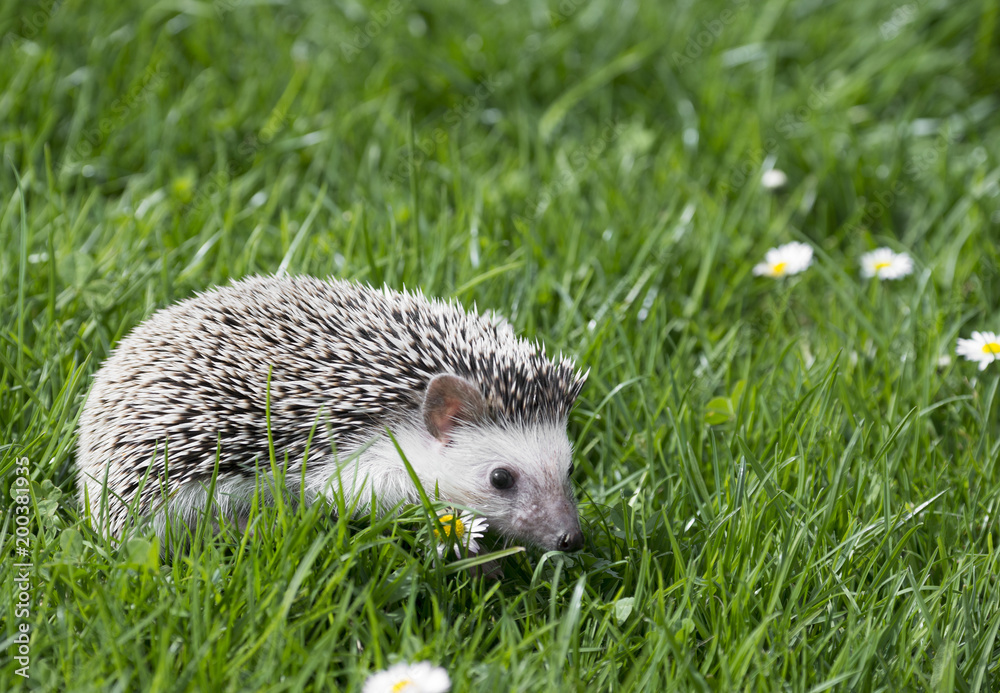<5 popular hedgehog species> Popular hedgehogs as pets

Many species of hedgehogs are also bred.
Each has its own unique characteristics and charm, making them popular as pets.
However, it is important to note that proper care is required for each species when keeping them, and in some areas there are legal restrictions on keeping them, so it is necessary to check local laws and regulations before considering keeping them.
African Pygmy Hedgehog, Atelerix albiventris

They are the most common type of pet, characterized by their small size and friendly nature. They have a dark coat color and come in a variety of colors, including black, brown, and white.
Basic Characteristics
Small size: African pygmy hedgehogs are relatively small, usually weighing between 250 and 600 grams as adults.
Coat Color: The coat color can vary from black, brown, and white.
Origin: Although they are native to Africa, they are kept as pets all over the world.
Characteristics and Behavior
Friendly and curious: Generally friendly and enjoys human interaction when handled properly.
Nocturnal: African pygmy hedgehogs are nocturnal and are rarely active during the day.
Housing
Cage: They require a cage with plenty of space. Temperature control and ventilation are important.
Flooring: Soft, clean flooring materials such as fleece or aspen shavings are suitable.
Diet
Balanced diet: based on a high-quality, protein-rich diet with occasional snacks such as cooked chicken or fruit.
Interaction and bonding
Can take some time to adjust: may be wary at first, but with gentle interaction will gradually become accustomed to people.
Health Care
Regular health checks: Proper nutrition and regular health checks by a veterinarian are necessary to avoid obesity, dental problems, skin diseases, etc.
With proper care, African pygmy hedgehogs make loving pets. However, due to the specific needs and responsibilities involved in raising them, it is important to do plenty of research and preparation before starting a breeding program.
Algerian Hedgehog

It is larger than the African pygmy hedgehog and has longer stinger. Native to North Africa, it is characterized by its orange-brown coat color.
Basic Characteristics
Place of origin: The Algerian hedgehog is native to North Africa.
Size: Larger than the African pygmy hedgehog, the Algerian hedgehog can weigh up to about 1 kilogram.
Fur Color: The Algerian hedgehog has a distinctive orange-brown coat.
Behavior and Characteristics
There are no major differences in the behavior and personality of the pygmy hedgehog compared to the African pygmy hedgehog, but there are some differences in the personality and behavior patterns of individual hedgehogs.
Generally, they are nocturnal, resting during the day and active at night.
Breeding environment
They require an appropriate cage and temperature control. Fleece or aspen shavings are suitable flooring materials.
It is important to provide them with a safe place to hide.
Diet
In addition to a special diet for hedgehogs, it is recommended to occasionally feed a high quality protein source (e.g. cooked chicken) and fruits.
Health Care
Proper nutrition and regular veterinary checkups are important. Attention should be paid to obesity, dental problems, and skin diseases.
Although detailed information about the Algerian hedgehog is limited
European Hedgehog, Erinaceus europaeus

Native to Europe, it is also kept as a pet and is especially popular in its native region.
Basic Characteristics
Origin: The hedgehog is found throughout Europe and parts of Western Asia and North Africa.
Appearance: Typical hedgehog, with a stinging back and a fur-covered abdomen. Body color is usually a mixture of brown and gray fur.
Behavior and Ecology
Nocturnal: European hedgehogs are nocturnal, active at night and resting in hiding during the day.
Hibernation: In cold regions, they hibernate for long periods during the winter.
Diet: European hedgehogs are omnivorous, feeding on insects, worms, small reptiles, fruit, and mushrooms.
Breeding
Breeding season: The breeding season occurs from spring to early summer.
Breeding Behavior: Males are territorial and search for females in courtship behavior.
Husbandry
European hedgehogs are wild animals and are not commonly kept as pets. Especially in Europe, keeping wild hedgehogs as pets is often restricted by law.
In their natural environment, they are often found in gardens and other areas that come into contact with human living space, and are considered an important element of nature conservation and biodiversity.
The European hedgehog, with its cute appearance and wild
European hedgehogs are loved by many people for their cute appearance and wild behavior, but because they are wild animals, proper knowledge and environment are required to keep them. The emphasis should not be on keeping them as pets, but rather as part of the ecosystem in their natural environment.
Four-Toed Hedgehog, Atelerix albiventris

Native to Africa, it differs from other hedgehogs in having four toes on each foot. They are small and have an attractive personality.
Basic Characteristics
Origin: Widely found in the savannas and farmlands of the African continent.
Characteristics: As its name suggests, this hedgehog differs from many other hedgehog species in having four toes on each foot.
Appearance
Size: They are about 15 to 25 centimeters long and generally weigh about 300 to 700 grams.
Appearance: They have a small, rounded body, and their backs are covered with needles, while their abdomens are covered with hair.
Behavior and Ecology
Food: Omnivorous, feeding on insects, fruits, seeds, and small animals.
Nocturnal: Primarily nocturnal, resting during the day.
Breeding
Housing: Proper cage, flooring, and temperature control are important for keeping hedgehogs as pets.
Diet: In addition to a high quality hedgehog-specific diet, a balanced diet with protein sources (e.g. cooked chicken), vegetables and fruits is necessary.
Breeding
Breeding season occurs several times a year, and it is common for a Four Toed Hedgehog to have several young per litter.
Long-Eared Hedgehog, Hemiechinus auritus

It is a rare species with large ears, although it is kept as a pet in some areas.
Basic Characteristics
Place of origin: Mainly in the Middle East, especially in Iran, Turkey, and Israel.
Characteristics: As the name implies, the ears of the Mammoth are very long. These long ears are thought to help regulate body temperature by releasing heat.
Appearance
Size: They are generally 16 to 25 centimeters long and weigh approximately 200 to 400 grams.
Appearance: Their backs are covered with needles and their bellies are covered with soft fur. Coat color varies by region, but is generally gray or brown.
Behavior and Ecology
Diet: Omnivorous, feeding mainly on insects and small animals.
Nocturnal: Active at night, they hide and rest during the day.
Breeding
Long-eared hedgehogs are not commonly kept as pets, but they do require appropriate environment and care.
They require adequate space, proper temperature control, and an appropriate diet.
Breeding
Breeding takes place primarily in the spring and early summer, with a typical litter size of four to six.
Long-eared hedgehogs are popular for their distinctive long ears and cute appearance, but it is important to meet their specific needs when keeping them as pets. In addition, since keeping them as pets is restricted by law in some areas, we recommend that you check your local laws and regulations before considering keeping them.

